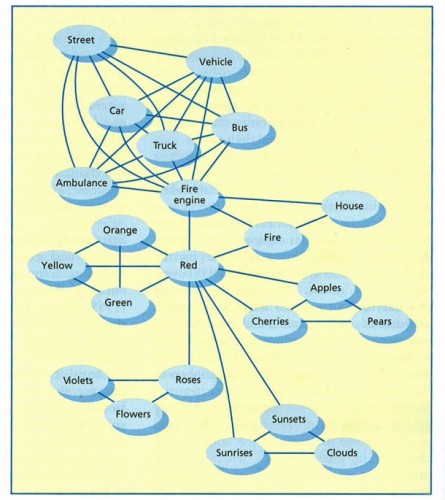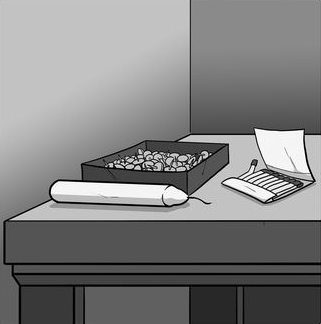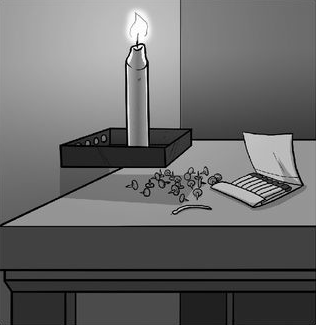What is creativity? Definition of creativity
Creativity is the process of producing something that is both original and worthwhile. When someone comes up with creative ideas they are ideas that are novel and appropriate to the purpose at hand. In this two part blog article we’ll be looking at the creative process and how your IQ level is critical in this process.
Left brain vs right brain and creativity
Have you ever heard people say that they tend to be more of a right-brain or left-brain thinker? Left brain people are said to be more rational, analytic, and controlling, while right brain people are said to be more intuitive, creative, emotionally expressive and spontaneous.
While there is little evidence that a more dominant ‘half brain’ (left or right) determines a person’s personality as shown here, there is good evidence that regions of the right hemisphere have a key role in what is called divergent thinking and the creative problem solving that depends on it.
Convergent thinking and divergent thinking
The psychologist J.P. Guilford first invented the terms convergent thinking and divergent thinking back in 1967. Divergent thinking is also loosely called ‘lateral thinking’, a term coined by the thinking guru Edward De Bono – author of ‘Six Thinking Hats’.
What is divergent thinking?
Divergent thinking is the process of generating multiple related ideas for a given topic or solutions to a problem. Divergent thinking occurs in a spontaneous, free-flowing, ‘non-linear’ manner. Convergent thinking, on the other hand, is the ability to apply rules to arrive at a single ‘correct’ solution to a problem such as the answer to an IQ test problem. This process is systematic and linear.
The idea of divergent thinking has become important in the scientific study of creativity because many widely used tests for creativity are measures of individual differences in divergent thinking ability.
An example of a divergent thinking question is:
“How many unusual and uncommon uses can you come up with for a brick and a knife”
Or
“How many uses can you make of a toothpick?”
The number of different responses, or the number of responses given by no one else, has traditionally provided a measure of how creative a person is.
Free association theory of creativity
Divergent thinking tasks have been widely used because traditionally creativity has been understood in terms of the accessibility of concepts in in our long term memory systems. Concepts are connected in our brains in ‘semantic networks’. Here is a schematic of a semantic network, with each concept ‘node’ of the network accessible from the concept ‘street’ via other nodes.
Psychologists have proposed that individual differences in creativity are due to differences in whether these kinds of associative networks were ‘steep’ or ‘flat’ – those with ‘flat’ networks have numerous and loose conceptual connections, enabling them to be more creative. Those with ‘steep’ networks tend to have more logical, linear associations between nodes. In the picture below, someone with a flat network quickly and creatively hops – node to node – from peacock to Rolls Royce – something someone ‘linear’ in their thinking would struggle with.
Left brain right brain re-visited: convergent and divergent
The cognitive neuroscientist Mark Beeman (2005) has brought together in one package the ‘left brain’ vs ‘right brain’ idea, and the steep vs flat semantic network idea. Steep, linear, logical and focused semantic networks is a specialization of the left hemisphere, while flat, diffuse, unfocused semantic networks, connecting distantly related concepts, is a specializations of the right hemisphere.
On his account, the left brain is specialized for convergent thinking, while the right brain is specialized for divergent thinking.
.
What is creative inspiration? Unfocused and unconscious
Creative breakthroughs are often reported to emerge spontaneously, when the mind is distracted and not focusing on the problem at hand.
many major breakthroughs happen in the unlikeliest of places, whether it’s Archimedes in the bathtub or the physicist Richard Feynman scribbling equations in a strip club, as he was known to do. It reveals the wisdom of Google putting ping-pong tables in the lobby and confirms the practical benefits of daydreaming. As Einstein once declared, “Creativity is the residue of time wasted.”
Scientists have begun study what helps with incubation and flashes of insight.
For a quick-and-ready demonstration of the idea of creative insight, consider this problem:
A man has married 20 women in a small town. All of the women are still alive, and none of them is divorced. The man has broken no laws. Who is the man?
If you solved the question, the solution probably came to you in a flash. The man is a priest or vicar.
 Mark Beeman and John Kounios has identified where that flash came from. In the seconds before the insight appears, a brain area in the right temporal lobe (shown here) shows a spike in activity. This region of the ‘right brain’ in particular excels in drawing together distantly related information – exactly what is needed when working on a hard creative problem.
Mark Beeman and John Kounios has identified where that flash came from. In the seconds before the insight appears, a brain area in the right temporal lobe (shown here) shows a spike in activity. This region of the ‘right brain’ in particular excels in drawing together distantly related information – exactly what is needed when working on a hard creative problem.
Scientists have identified some situations that help with creative problem solving – and right brain activation.
Sleep & creativity
Ullrich Wagner and his colleagues in Germany have shown that sleep can have a dramatic effect on the ability to gain insight into a problem. In their Nature paper ‘Sleep Inspires Insight’ they showed that after giving people practice with a number sequence problem that had a hidden rule, the group who slept for 8 hours had close to a 60% success rate in getting insight into the underlying rule when they got back to the task, compared to 23% for both control groups – a group who had an 8 hour waking gap during the day and another group who stayed awake for 8 hours during the night.
Humor & creativity
Mr. Beeman and his colleagues found that showing a clip of Robin Williams doing stand-up boosted the success rate of solving their insight problems by about 20%.
In her own research, reported in The Journal of Personality and Social Psychology, Dr. Isen found that people who had just watched a short film of television ”bloopers” were better able to find a creative solution to a problem than people who had watched a film about math or who had exercised. The problem she used was the following: People were given a candle, matches and a box of tacks and asked to attach the candle to a corkboard wall so that the candle would burn without dripping wax on the floor.
Most people who try to solve this problem get trapped in what is known as ”functional fixedness” – the tendency to see things in terms of their conventional uses. Those who watching the funny film, however, were generally able to solve the problem by seeing an unusual use for the box holding the tacks: They tacked the box to the wall and used it as a candleholder.
.
Alcohol & creativity
Alcohol can also ‘inspire insight’. Earlier this year, University of Illinois at Chicago researchers compared performance on insight puzzles between sober and intoxicated students. The scientists gave people ‘remote associates’ puzzles, in which people have to find another word that can be paired with each of three words, such as:
Pine Crab Sauce
In this case, the answer is “apple.” (The combined words are pineapple, crab apple and apple sauce.) Partly drunk people (just below the legal limit) solved nearly 30% more of these word problems than people who were sober.
Why do sleep, humour and alcohol work with creative insight?
There are two answers to why these measures help with creative insight. The first is the surprising advantage of not focusing.. The cortex needs to relax in order to seek out the more remote association in the right hemisphere to provide the insight As Lehrer explains,
Although we live in an age that worships focus—we are always forcing ourselves to concentrate, chugging caffeine—this approach can inhibit the imagination. We might be focused, but we’re probably focused on the wrong answer.
And this is why relaxation helps: It isn’t until we’re soothed in the shower or distracted by the stand-up comic that we’re able to turn the spotlight of attention inward, eavesdropping on all those random associations unfolding in the far reaches of the brain’s right hemisphere. When we need an insight, those associations are often the source of the answer.
Another answer is that positive moods tend to enhance divergent thinking and creative problem solving, particularly when the solutions looked for are not ‘optimizing’ (ideal) ones but ‘satisficing’ (‘do the job’) ones.
”Any joke that makes you feel good is likely to help you think more broadly and creatively,” said Alice M. Isen, a psychologist at the University of Maryland in Baltimore.
In light of this and other research on the effects of positive mood on cognition, research reported this year at the annual meeting of the American Psychological Association shows that the feeling of having fun at work is more important than overall job satisfaction in workers’ effectiveness. In a survey of 382 people from a wide variety of work places, the psychologist David Abramis found that those who felt their work was fun performed better and got along better with co-workers than did those who were satisfied with their jobs but did not see them as fun.
Creativity and IQ
In the next blog I will be explaining why your IQ level and working memory capacity is also critical in the creative process. Stay tuned!
And please share your experiences with the creative process.





